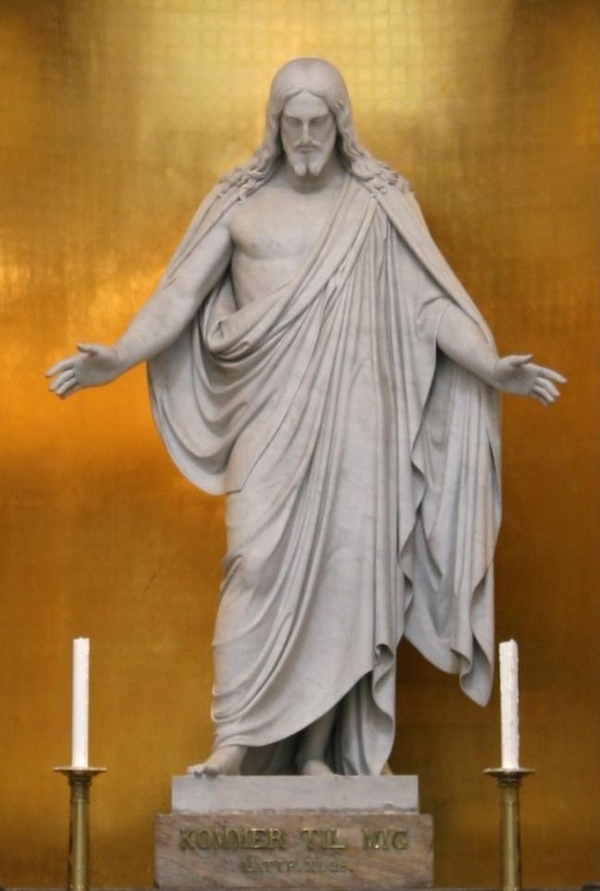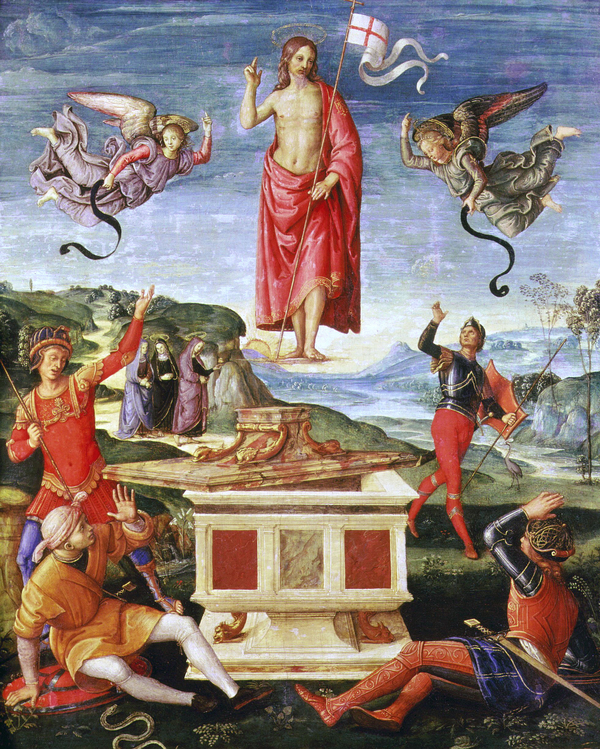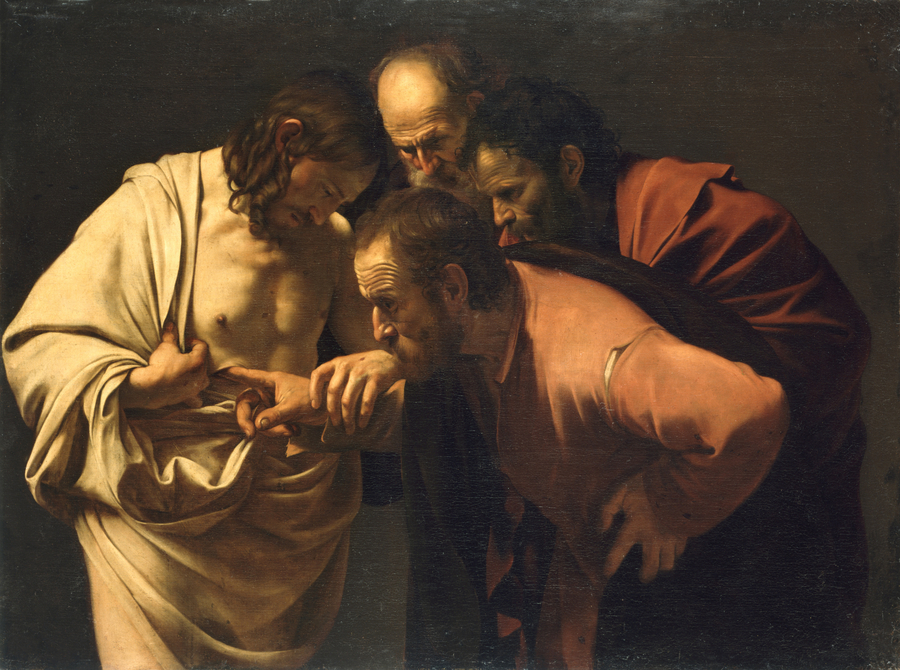In September 1807, the Vor Frue Kirke (Our Lady’s Church), the National (Lutheran) Cathedral of Denmark, was destroyed during the bombardment of Copenhagen by the British navy. The church was rebuilt between 1817 and 1829 in the then fashionable Neoclassical style. The internationally famous Danish sculptor Bertel Thorvaldsen (1789–1838) was asked to produce for the new church a series of colossal statues of Christ, John the Baptist, and the apostles. Of these, Christus (Christ) has become best-known (Fig. 1). Copies of the sculpture, often true to size or even larger, can be found around the world. Thorvaldsen’s Christ is particularly meaningful to the adherents of the Mormon Church of Jesus Christ of Latter-Day Saints. An 11-foot replica is on display at the Temple Square in Salt Lake City, UT. Other reproductions are in Mormon churches across the United States. Copies of Thorvaldsen’s Christ are also found in non-Mormon buildings, such as the Johns Hopkins Hospital in Baltimore. Popular culture has embraced the sculpture as well: small plastic reproductions for domestic or dashboard use are widely sold and, in 2009, parishioners of the Önsta Gryta church in the Swedish city of Västerås made a nearly 6-feet copy out of 30,000 Lego blocks.
Thorvaldsen’s Christ shows a young man whose idealized body is draped in a heavy cloth that leaves part of his torso and right arm bare. His arms are outstretched in a gesture of welcome, embodying the Christian biblical quote on the statue’s pedestal, "Come to me all you who labor and are heavily burdened, and I will give you rest" (Matthew (11:28). Christ’s face, with its perfectly modeled classical features, is inclined, the eyes cast downwards, and the lips slightly parted.
The Western iconographic tradition shows Jesus as nude or even partly nude only at specific moments: in images of his nativity, in which he often wears no clothes at all; his crucifixion, in which he wears only a loin cloth; and his resurrection, as in Thorvaldsen’s sculpture.1 Images of the nude or partially nude Christ, in which the viewer’s attention is drawn to the body of Christ, have overtones of Eucharistic devotion characteristic of Roman Catholicism from the thirteenth century forward and maintained, albeit with a few notable changes, in the Lutheran church. Thorvaldsen’s Christ, behind the altar, helps the faithful participating in the Communion to imagine themselves in the presence of Christ, whose body and blood, according to article X of the Augsburg Confession, are truly present in the bread and wine of the sacrament.2
Thorvaldsen’s sculpture presents a Christ risen from the dead and available to believers in the present moment. Torso bared, he resembles traditional images of the resurrection, but differs from them in that the wounds of the crucifixion are underplayed. In Renaissance and Baroque images, such as Raphael's Resurrection (Fig. 2) and and Caravaggio's Doubting Thomas (Fig. 3), Christ prominently displays his wounds. Thorvaldsen’s image, however, is iconic rather than narrative, inviting the viewer to focus on the presence of Christ rather than on events of the life of Jesus.
Yet, despite iconicity and idealism, Thorvaldsen’s Christ is not distant and remote. His downward gaze and outstretched hands all invite an immediate response from the congregation. The viewer is not merely invited into this Christ’s presence, as the quote from the Gospel of Matthew suggests, rather the (human) world is entered and embraced by Christ as he steps forward to engage the faithful. Thorvaldsen’s sculpture appears to underscore the Lutheran belief that salvation is dependent purely on faith in Christ, or, according to the Augsburg Confession (article IV), individuals “cannot be justified before God by their own strength, merits, or works, but are freely justified for Christ's sake, through faith, when they believe that they are received into favor . . .”3
Notes
Notes
1. In contrast, the Orthodox iconographic convention is to show him fully clothed even in these circumstances. Compare, for example, Piero della Francesca’s Resurrection with the Chora church in Constantinople's apse fresco depicting the Anastasis or Harrowing of Hell, an event from the narrative of Christ's Resurrection.
2. The Augsburg Confession is the principal confession of faith of the Lutheran Church. “Of the Supper of the Lord they teach that the Body and Blood of Christ are truly present, and are distributed to those who eat the Supper of the Lord; and they reject those that teach otherwise.” See www.perma.cc/0LCtyYW3fWs.
3. Ibid.
Keywords
Imprint
10.22332/con.obj.2014.41
1. Petra ten-Doesschate Chu and Peter Ahr, "Bertel Thorvaldsen, Christus (Christ)," Object Narrative, in Conversations: An Online Journal of the Center for the Study of Material and Visual Cultures of Religion (2014), doi:10.22332/con.obj.2014.41
Chu, Petra ten-Doesschate and Peter Ahr. "Bertel Thorvaldsen, Christus (Christ)." Object Narrative. In Conversations: An Online Journal of the Center for the Study of Material and Visual Cultures of Religion (2014). doi:10.22332/con.obj.2014.41





